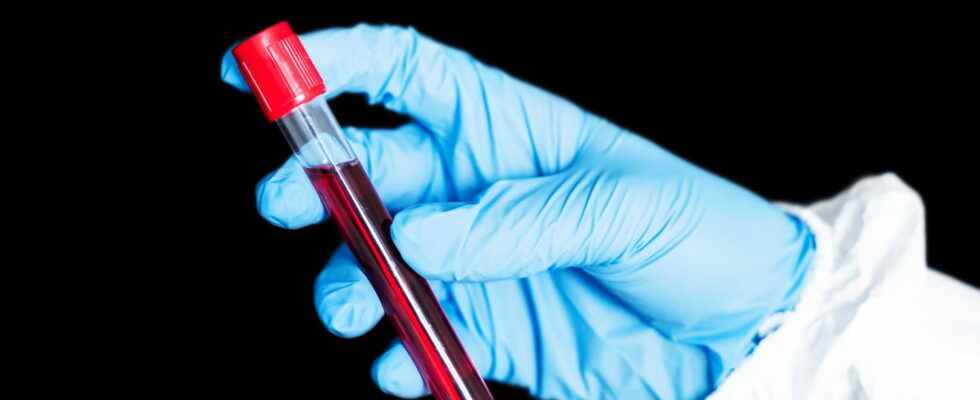Sepsis is an infection caused by the presence of bacteria (even fungi such as staphylococcus or viruses) in the blood. Can we cure it? What causes? Symptoms, diagnosis, treatment, chances of survival… Answers with Dr Jacques Amselem, general practitioner.
Sepsis means a infection caused by the presence of bacteria in the blood. Diagnosis requires a blood sample. Hospital care is urgent and mandatory to treat sepsis. Its most severe form is septic shock. What are the causes ? Can sepsis be cured? What are the chances of survival? Definition, symptoms and treatments.
Definition: what is sepsis?
Sepsis is a medical term whose use has been somewhat abandoned in favor of the term sepsis. Sepsis is a pathology that can be likened to a generalized infection. sepsis is an infection caused by the presence of bacteria (even fungi or viruses) in the blood and is disseminated throughout the organization. Sepsis then defines all the reactions of the body in response to this aggression. For example, when staphylococcus is the cause of sepsis, it is then called staphylococcemia. We can also speak of dental sepsis.
What are the causes of sepsis?
As Dr. Jacques Amselem, general practitioner in Seine-et-Marne, reminds us, there are many causes of sepsis. “Most often they concern a bacterial attackmore rarely another type of germ“. Similarly, the initial infection can affect any tissue or organ and spread to other tissues or organs via the bloodstream. Depending on the symptoms presented by the patient, a distinction is made between sepsis, severe sepsis, and septic shock, of increasing severity.
To diagnose sepsis or one of its more severe forms, a blood sample must be carried out, from which cultures will be practiced: we speak blood cultures. This allows the highlighting of the incriminated germ in sepsis and to adapt the treatment. Other examinations will be guided by the additional symptoms, to search for the entry point of the germ.
What are the symptoms of sepsis?
There are many manifestations of sepsis. To suggest the diagnosis, it is necessary at least two signs out of the following four :
- of the fever above 38°C or decrease in temperature below 36°C, often accompanied by chills;
- a respiratory rate greater than 20 breaths per minute;
- a carbon dioxide blood pressure less than 32 millimeters of mercury;
- a tachycardia greater than 90 beats per minute;
- a leukocytosis greater than 12,000 white blood cells per cubic millimeter of blood;
- a leukopenia, presence of less than 4,000 white blood cells per cubic millimeter of blood.
Other symptoms may also be present, sometimes making it possible to evoke the origin of the infection, which is called the gateway. Severe sepsis is defined by the signs of sepsis, associated with a drop in blood pressure, or organ failure, ie the demonstration of functional disorders. This diagnosis also calls on precise criteria, based on clinical or biological signs after blood examination. Finally, septic shock is severe sepsis. In case of septic shock, there is a drop in blood pressure and the amount of oxygen reaching the organs. Major organs such as the kidneys, liver, lungs and central nervous system stop working properly. Confusion or even delirium, decreased urinary flow, hyperventilation, dizziness, tachycardia and tremors may also appear.
What are the treatments to cure sepsis?
Sepsis requires hospital care which is based on the association ofantibiotics and treatment of the identified portal of entry (wound, removal of the foreign body in question, surgery, etc.). At first, broad-spectrum antibiotics, that is to say active on many types of bacteria, are given. Once the type of infection has been identified on the samples, the antibiotics can be modified for more targeted efficacy. In severe sepsis, infusions to raise the tension as well as support if necessary for organ failures are necessary. In septic shock, in addition, drugs called vasoactive drugssuch as dopamine, dobutamine, adrenaline or noradrenaline, are also supplied by infusion.
“In France, the mortality of patients with sepsis is 27%”
What are the chances of survival?
As the Institut Pasteur points out, one person dies of sepsis globally every six seconds. In industrialized countries, 96 cases of sepsis are reported per 100,000 inhabitants under the age of 65. A figure that rises to 1,200 for those over 65. “In France, the mortality of patients with sepsis is 27%, but the mortality of the most serious form (septic shock) can reach 50%”, details the Institut Pasteur.
Thanks to Dr Jacques Amselem, general practitioner in Seine-et-Marne, for his details and validation.
